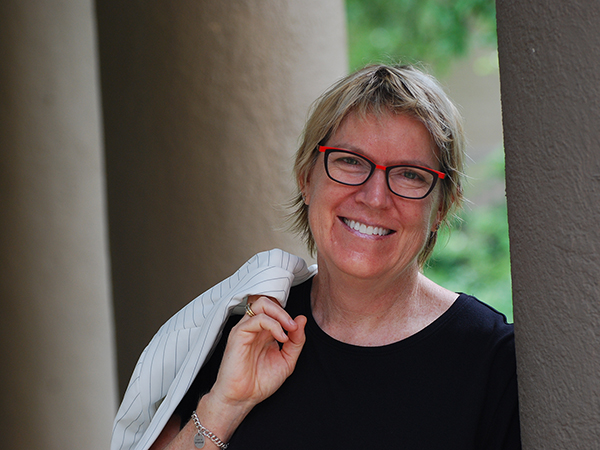Texas A&M CVM Focuses On Employee Well-being During Pandemic
Story by Megan Myers, CVMBS Communications
Well-being involves the mind, body, and spirit, says Dr. Nance Algert, a member of the Texas A&M College of Veterinary Medicine & Biomedical Sciences’ (CVM) Office for Diversity & Inclusion.

“Well-being is staying connected to ourselves and knowing ourselves well enough to know what we need,” Algert said. “Well-being is also being mindful about being connected, understanding that we don’t have to do things alone and that to isolate and do things alone can be problematic.”
According to the Merck Animal Health Wellbeing Study, approximately one in 20 veterinarians in America experience serious psychological distress, including depression, burnout, and anxiety, and while half are seeking treatment, only 16% utilize well-being resources available through national or state veterinary organizations.
In an effort to improve well-being in the veterinary profession, the CVM has focused on providing resources for students, faculty, staff, and administrators for several years.
Most recently, maintaining well-being among employees has been a top priority during the COVID-19 pandemic.
Some employees began working from home in March and have been isolated since, while others at the Veterinary Medical Teaching Hospital (VMTH) have faced many new challenges as they continue to serve the people and animals of the community and state.
“It’s a complex time and none of us has done this before,” Algert said. “We’re in a marathon, not a sprint, so we’ve really got to take a little bit of time each day to ensure that we are taking care of ourselves.”
To help their colleagues find those daily moments of well-being, Algert, executive associate dean Dr. Kenita Rogers, and other members of the Office for Diversity & Inclusion are providing CVM faculty, staff, and administrators with many new resources for maintaining physical, mental, and emotional health.
Each week, Rogers updates an ever-growing list of well-being resources that covers a variety of subjects, from addressing fatigue to supporting children during COVID-19. The list, currently containing more than 100 individual resources, is being sent to employees in weekly emails and compiled on the CVM’s COVID-19 Well-being Resources webpage.
“The idea for the resources list was a team effort,” said Rogers, who also serves as director of the CVM’s Office for Diversity & Inclusion.
“At first, we were brainstorming what the Diversity & Inclusion Office could do to help the VMTH, as they were really on the frontlines in dealing with many new situations related to COVID-19—safety concerns, different client interactions, stressful working conditions, etc.,” she said. “We quickly realized that the changes were stressful for everyone in the college and wanted to share these resources with anyone who could use them.”
For those who wish to discuss specific concerns, either personal or professional, the CVM is also offering one-on-one and group facilitated dialogue opportunities. Algert is hosting these discussions to support her coworkers and help manage any conflicts that arise in the workplace from the added stress, anxiety, and fear the pandemic has created.
Amy Savarino, the VMTH chief pharmacist, is one of many employees who has participated in these facilitated dialogues.
“Being a supervisor, I wanted to make sure I had my head on straight and that I felt like I could tackle this issue,” Savarino said. “Life was changing and it went from normal to abnormal so fast. We all went through something and none of us knew how to handle it; none of us has ever handled it before, so even the best prepared person wasn’t prepared.
“It was really easy and just such a pleasant experience,” she said. “Nance was encouraging and uplifting. She just added a calmness and peace that I needed at that moment.”
Providing these well-being resources not only plays a role in keeping employees happy and healthy, it also helps them do the best job possible when teaching students and caring for VMTH patients.
“Taking care of ourselves is not just important but is also a responsibility,” Algert said. “We can only give to others what we can give to ourselves.”
Whether the CVM eventually returns to life as it was before the pandemic or continues to adjust to a “new normal,” the Office for Diversity & Inclusion hopes to keep well-being a priority for employees.
“I hope that there is a real sense of community at the CVM,” Rogers said. “Frankly, how we take care of each other and support each other, particularly during difficult times, defines who we really are. When we look back, I hope we can say that the CVM made it a priority to care for one another and that we were genuinely an inclusive community.”
###
For more information about the Texas A&M College of Veterinary Medicine & Biomedical Sciences, please visit our website at vetmed.tamu.edu or join us on Facebook, Instagram, and Twitter.
Contact Information: Jennifer Gauntt, Director of CVM Communications, Texas A&M College of Veterinary Medicine & Biomedical Sciences; jgauntt@cvm.tamu.edu; 979-862-4216


